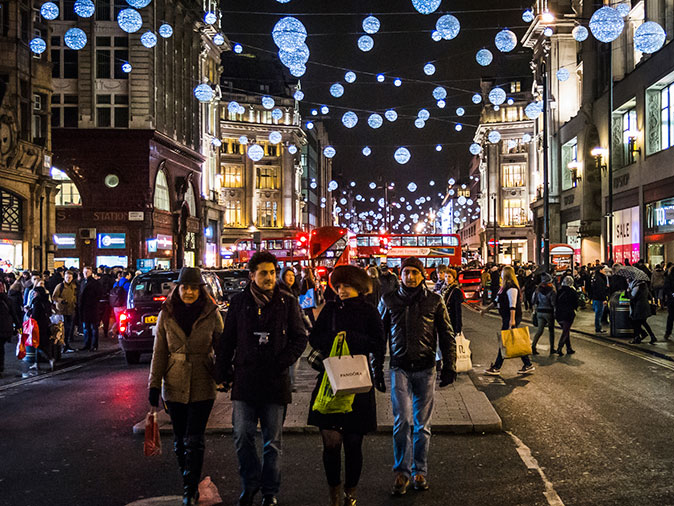
Types of Business Clusters in London
Today the gathering together of related businesses in specific areas is a defining feature of London’s economic landscape. From the fish market at Billingsgate to tailoring at Saville Row and jewellery in Hatton Garden, some areas of London have become virtually synonymous with the speciality firms that thrive there. In each of these areas, companies and institutions from a particular industry have gravitated together over many years to form a business cluster, trading and competing together, operating on a highly local scale or with enormous scope and influence, from the high street to the Square Mile.
The benefits of business clusters
By working near to each other the firms are able to take advantage of economies of scale and local production networks, known as agglomeration economies. If an area specialises in the production of a certain type of good, for example, all firms will benefit from better supply channels, potentially lower production and transportation costs, a more stable source of trained workers and an infrastructure built specially for that industry. Retail businesses profit from a larger customer base and a reliable footfall, because consumers will travel to that area specifically to find the kind of goods they sell.
While many of London’s business clusters have developed naturally over the course of many years, local authorities have noticed the distinct benefits they bring to the city’s economy and may look for ways to promote and develop clusters in their districts. Urban planners, for example, are able to use zoning to guide the development of London’s commercial, industrial and residential districts and to incentivise businesses to settle in specific locations.
Not only is there support in place for London’s established business clusters, then, but any new clusters that form may be actively encouraged to grow and flourish. Recently there have been plenty of newcomers to the table, like the high-tech start-up companies seeking to gain a foothold in the national and international economies for which London can be a significant stepping-stone.
Why is finance all in the City?
A clear example of clustering is given by the City of London, one of the world’s most successful banking centres and a leading international hub of financial trade. The roots of this cluster stretch as far back into London’s history as Shakespeare’s time, with the Royal Exchange being built in 1565.
Britain was the world’s first truly modern economy, certainly the first with the naval capital and political infrastructure required to play on the global stage, and steady economic growth over time along with industrial and social modernisation created a need for banks to collect savings and make loans. Money and people constantly flowed into and out of the country through London and the city quickly became the centre of all British wealth, trade and communications.
As the UK’s influence grew, so did the Square Mile: the banks actively lent and borrowed money from other banks around the world, placing the City at the centre of the international payments system. London developed a sophisticated money market in the early nineteenth century which continued to attract banks from home and abroad, while comparatively modern and efficient correspondent networks helped the financial sector survive the major crises that had such an impact on the national economy, including the end of the British Empire and the World Wars.
By the late twentieth century London was home to the world’s most important stock exchange, money market, investment bankers and commercial banks. Today the City maintains its leading position in the world’s financial economy, along with New York, and is home to a staggering 500+ banks.
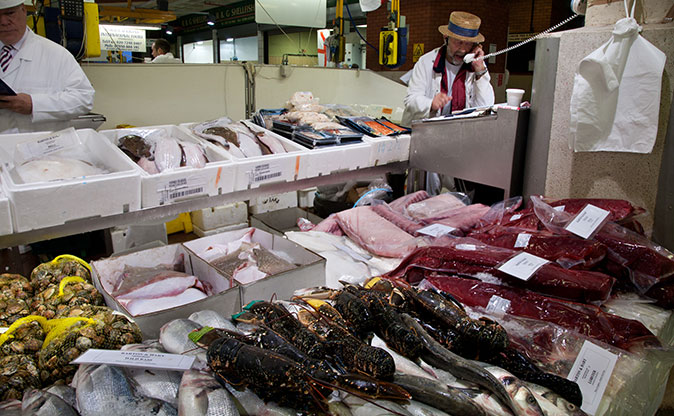
When did Billingsgate become famous for fish?
The Square Mile represents the political and economic power a business cluster can command as it accumulates money and prestige, but the fish market at Billingsgate is a prime example of a cluster forming around demand for a perishable product and largely shaped by transport and supplier convenience.
Tracing its roots back to 1327, Billingsgate was the largest fish market in the world by the start of the nineteenth century. During medieval times fish was the staple food of London’s poor, and the market’s importance as a cheap and steady supply of sustenance earned it the legal protection of successive Kings and Queens following Edward III, who banned the establishment of other markets within a 7 mile radius around the site. In 1982, the market moved to a more updated site near Canary Wharf with 98 stands and 30 shops.
Easy supply channels from the market’s position on the docks of the Thames have contributed significantly to its growth as a business cluster, which is why the largest concentrations of fishmongers can be found at points where the produce is delivered fresh by fishing boats. Today Billingsgate Market shifts about 25,000 tonnes of seafood every year for a healthy £200million turnover, despite an overall decline in the global fish stock.
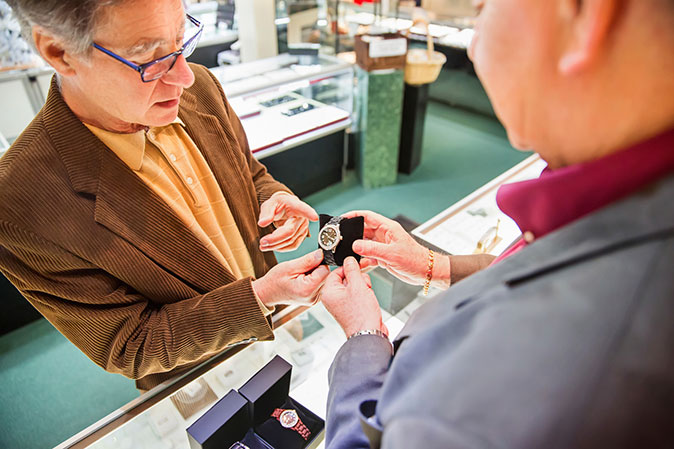
Why do jewellers focus on Hatton Garden?
From perishable products to luxury goods, London’s retail centres are among the most prominent business clusters in the country. Like the City and Billingsgate Market, Hatton Garden has a long history that owes much to London’s status as an international centre of trade and travel.
Hatton Garden’s jewellery trade traces its origins back to the founding of Johnson Matthey’s gold and platinum business in 1817, an influential company that attracted other jewellers to the area, but it was the discovery of diamonds at a South African site in the late nineteenth century that truly ignited the industry. Being based on a major global trade route, London’s businesses were ideally situated to quickly capitalise on world events. When the discovery caused a stampede of prospectors to Kimberley Mine, then, many of the precious gems found their way back to the British capital, selling for as much as £25,000 each. With funding from a syndicate of bankers, Hatton Garden soon established an international reputation as London’s Jewellery Quarter.
The success of Hatton Garden as a business cluster owes much to its deep heritage of craftsmanship and expertise: it is the creation and growth of a specialised labour pool, along with the sharing of knowledge and technology between local firms, that enables agglomeration economies to become self-sustaining and helps them to grow over the years. Today about 300 businesses and 55 shops in Hatton Garden are linked to the jewellery trade, including the headquarters of renowned diamond brokers De Beers, and the area continues to attract businesses from all over the world.
Why does Old Street attract web-based companies?
The same processes that enabled clusters to grow around traditional trades like food and finance are also turning Britain into a digital powerhouse. Technology is one of the fastest growing industries in the country; one 2014 study estimated that London’s tech industry will be injecting some £12billion into the national economy over the next decade, outstripping New York, San Francisco and even California’s Silicon Valley.
At the forefront of London’s digital crowd is Silicon Roundabout, which is the name given to the Old Street region since it became home to a range of tech and web-focused companies. The cluster began life as a group of around 15 tech start-ups drawn to the creative vibes of the nearby Shoreditch area, a trendy part of East London that had already built up a reputation as a haven for the digital industries.
The largest business clusters often depend on external funding to accelerate growth early in their development, and Silicon Roundabout is no exception. After the British government announced a £200million investment package intended to incentivise companies to move to the capital in 2010, the number of firms operating in the area reportedly exploded from 200 to over 5,000 in less than four years. Since that cash injection a number of high-profile and influential companies, including Amazon and Facebook, have set up shop in Old Street.
In both business and politics, the UK’s elite are placing a lot of faith in the power of Silicon Roundabout to revitalise the British economy. In 2011 search behemoths Google established their newest Campus in the area, occupying a five-storey building to create a shared workspace for technology start-ups which they describe as “an engine for collaborative innovation.” Today the cluster is continuing to grow and provide a lucrative return on the government’s initial investment.
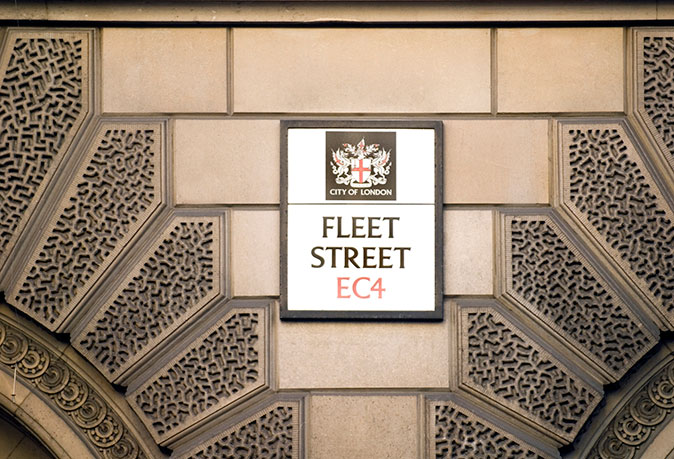
Why was Fleet Street a byword for the British newspaper industry?
Once a bastion of the newspaper industry, Fleet Street is now almost completely deserted of any news organisations, but in its prime it was one of the world’s most important, successful and influential business clusters.
Christened “The Street of Adventure” by prolific English journalist Philip Gibbs in 1909 and later by Private Eye as “The Street of Shame”, Fleet Street’s nicknames perfectly illustrate the two sides to this historic business cluster: investigative journalism and the uncovering of sleaze and scandal. The former home of major titles The Times and The Daily Telegraph has a dramatic, tumultuous history that is closely tied to British culture.
The growth of the first newspapers was facilitated by the literary heritage of the Fleet Street area. Wynkyn de Worde, apprentice to the father of the British printing press, William Caxton, became the first printer to set up shop on the Street of Shame in 1500. de Worde was also the first to establish a book stall in nearby St Pauls’ Churchyard, which became the locus for the UK book trade for centuries. The nation’s first real newspaper – the Daily Courant – began life in Fleet Street in 1702, published not far from the future home of the man who wrote the dictionary, Dr Samuel Johnson.
It was a combination of location and resources that provided the main growth factors for this important business cluster. Lying almost exactly between the City of London and Parliament, Fleet Street is ideally situated for the investigative reporter in need of a place to entertain sources (with easy access to food and wine to get them talking) and sits close to one of the London’s main legal zones, another vital resource for the intrepid journo.
Fleet Street is not only a good example of a successful business cluster, it also serves as a powerful reminder that even the most established and reputable clusters can disappear overnight. The relocation of Rupert Murdoch-owned The Times to Wapping in 1986 kicked off an exodus of major news organisations from Fleet Street that ended with the move of Reuters to Canary Wharf in 2005. Murdoch claimed he relocated his flagship titles in order to find better access to new technologies and less congested delivery lanes, but it was widely supposed to have been motivated by the so-called Wapping dispute between Thatcher’s Conservative government and the trade unions who worked in the newspaper industry.
Although no longer the powerhouse cluster it once was, Fleet Street is still home to a small group of news and publishing companies, including the Metro and The Wall Street Journal.
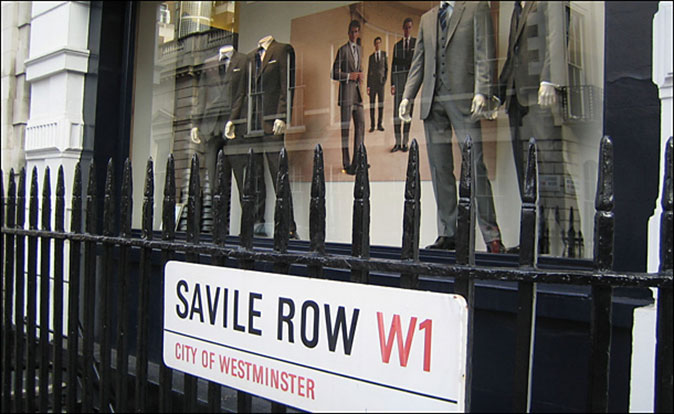
Why is Savile Row a world leader in bespoke tailoring?
Entire industries and the clusters which support them have been ignited by a select group of influential people or companies. Some business clusters form gradually over many years, others spring up after an initial boost. For the locus point of bespoke tailoring in London, Savile Row, the boost came from a single man.
Beau Brummell was an iconic English socialite who epitomised the fashionable, well-dressed gentleman in the 18th and 19th centuries. He was the original satorialist, popularising a fitted and understated look that would become the modern suit, and his patronage to the tailors around the Burlington Estate put nearby Savile Row firmly on the map. In fact, some of the early master outfitters were so widely respected that their mere presence on the street helped draw in business for the entire cluster, most notably in 1846 when Henry Poole created a second entrance at the back of his father’s business that allowed customers to enter from Savile Row. Today, Henry Poole & Co. is one of the oldest and most established tailors on the street.
Like other business clusters that specialise in luxury goods, prestige and patronage have been the vital lifeline for the growth and sustainment of “the golden mile of tailoring”, ever since that first boost by Brummell. Since Savile Row was originally a residential home to aristocrats and members of London’s high society, its tailors have served an astonishing range of high-profile clients, clothing accomplished men such as Lord Nelson, Napoleon III, Prince Otto von Bismarck, Charles Dickens and Sir Winston Churchill. Its reputation for exclusivity has continued through to this day thanks to royal endorsement and custom from popular celebrities like David Beckham and Jude Law.
Another vital feature of this business cluster is the retaining of specialist knowledge. To become a tailor of Savile Row, you need to complete an apprenticeship that lasts between three and five years, equivalent to a university degree. To become a Master Tailor, it takes no less than ten years – longer than it takes to become a GP. This gives them the kind of industry knowledge that cannot be found elsewhere, ensuring that their products are considered works of master craftsmanship. Each suit requires around 50 hours of personal labour and fetches anywhere between £2,000 and £10,000.
Yet Savile Row has seen a decline in recent years. Bombarded by the forces of recession, globalisation, competition and increasingly high rents, bespoke tailors have found it difficult to attract new customers who are willing to pay so much for a suit, and they have sought new ways to reinvigorate the cluster in response. The main result of this has been the formation of Savile Row Bespoke in 2004, an association representing twelve tailors that attempts to protect their specialist knowledge from imitators by clearly defining the terms “bespoke suit” among others.
Savile Row remains the heart of British bespoke tailoring and one of the most famous examples of a business cluster, but today it also provides a fascinating example of how historic clusters adapt in the face of modernity.
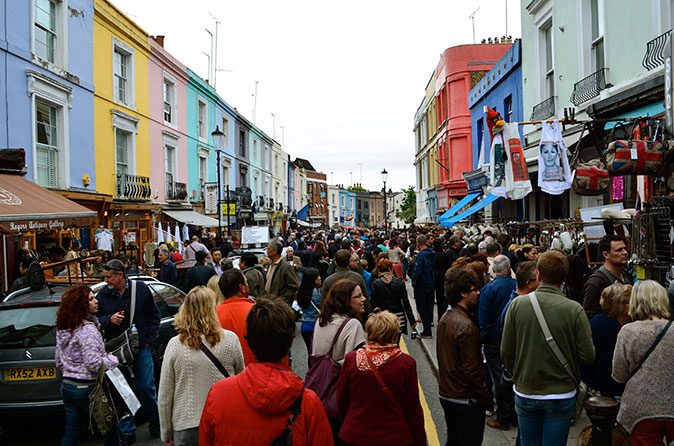
Why do antiques dealers sell in Portobello Road?
Today we tend to associate business clusters with powerful firms and emerging industries, but some of the most successful clusters had much humbler origins. Beginning life in the 19th century as a small collection of traders known as “costermongers”, Portobello Road is one of the world’s most storied street markets and a British institution, immortalised in films from the 1971 Disney hit Bedknobs and Broomsticks to 1999’s Notting Hill. Hundreds of stalls, restaurants and pubs vie for attention along a road that spans almost the entire length of Notting Hill in west London. Now more famous for antiques than fresh food internationally, the market provides a good example of how a business cluster can thrive with the right combination of location, community and reputation.
The costermongers first moved to the area around 1850 selling fresh food, medicines and general goods. Before that, Portobello Road was a simple country footpath given its name by the owner of nearby Portobello Farm (built in 1740 on the site of modern-day St Charles Hospital). Location was a big factor in helping the market grow. Its Victorian traders thrived on business from the wealthy residents of the newly built Paddington and Notting Hill sitting on either side of it, and as these residential developments gradually expanded, they drew in more and more traders.
The famous antiques section emerged mostly after the Second World War. In the 1940s, Portobello Road Market provided a good outlet and a ready supply of customers for the so-called “rag-and-bone men” (made famous by British comedy Steptoe and Son) who made a living by collecting and selling discarded household items. These traders were early versions of the flea market stalls that can be found in the market today selling bric-a-brac and vintage clothing.
The rag-and-bone men were accompanied around this time by more high-end traders who were forced by the closure of Caledonian Market during the war to find new premises in Notting Hill. For the most part these traders were legitimate specialists in silverware and antiques, but Caledonian Market had also built up a reputation as a slightly nefarious place where stolen goods could be sold legally and some of these traders were looking for a new site to sell their wares. Caledonian Market now operates in the docklands.
With over 1000 dealers every Saturday and a constant throng of customers, Portobello Road still benefits from location. Films like Notting Hill have ensured boosted tourist numbers to the area and today the flea market stalls jostle side-by-side with the high-end silverware and antiques shops that sit on the side roads.
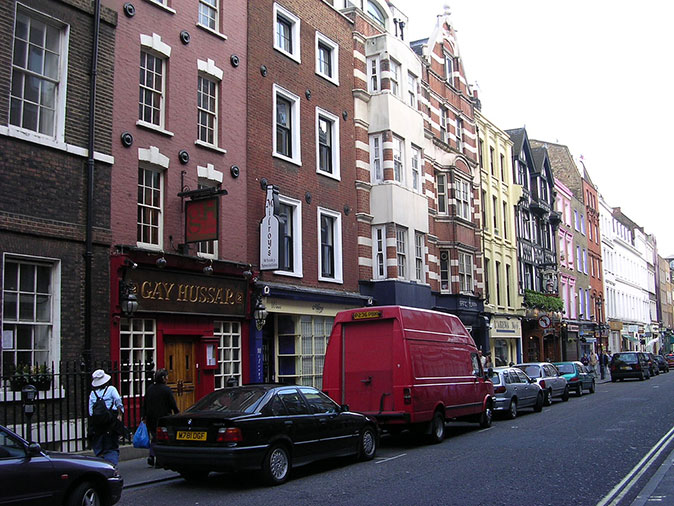
Why is Soho one of the world’s primary suppliers of post-production services?
Soho is one of London’s most schizophrenic areas. It is effectively one big business cluster for the creative industries, a melting pot of theatres, clubs, companies, creativity and multiculturalism that, according to The Evening Standard, employs one fifth of all the creative jobs in London. Major names in music, fashion and digital media have made a home there, but there is one specific service for which it has established an international reputation.
Soho is recognised around the world as a primary supplier of post-production services to the film, TV and advertising industries. There are estimated to be around 200 post-production companies in the area employing around 70% of Britain’s entire film industry, drawing much of their income from Hollywood and the most successful global advertising agencies. They have bagged at least 22 Oscars and 100 awards at Cannes.
Talent, knowledge and industry specialisation have enabled the growth and success of this business cluster. Post-production in Soho can trace its origins back to the 1920s, when Wardour Street was a hub for the business, administration, legal and finance services that were main features of the British film industry at the time. The actual process of making films was based more on the outskirts of London.
The first significant US investment came around this time, and it started a pattern of American companies investing in the British film industry that helped give UK studios a competitive edge in the 1960s and 1980s. As post-production services became more specialised and expensive, so Hollywood continued to outsource editing and special effects to Soho companies who had already built up the necessary skills.
The main factor in Soho’s post-production success is the vast amount of industry knowledge the community holds. Soho companies have access to a large and highly specialised workforce that have cultivated a worldwide reputation for expertise. Encouraged by their close proximity to each other, easy transport links in Central London and the naturally social lifestyle of working in Soho, post-production specialists can share news and learn from one another on the streets and in the restaurants (epitomised by the 1985 Groucho Club).
The experts in Soho have a degree of credibility that means they are frequently hired and re-hired within the community, moving from firm to firm. The architecture of Soho’s buildings seems to have designed with post-production in mind – there is plenty of space for creative work but the buildings are ideal for small companies with less than 4 employees, which make up around 65-75% of all creative firms in Soho.
Soho’s post-production companies benefit from the inherently tradable aspect of their work. Supported by the creation of Sohonet, a privately financed high-capacity broadband network established in 1995, the studios can work for clients regardless of their location and send film clips back and forth between Soho and Burbank, California.
With great access to financers, distributors, the TV market, a large and highly specialised workforce and a vast amount of industry knowledge, Soho is one of London’s most successful business clusters.
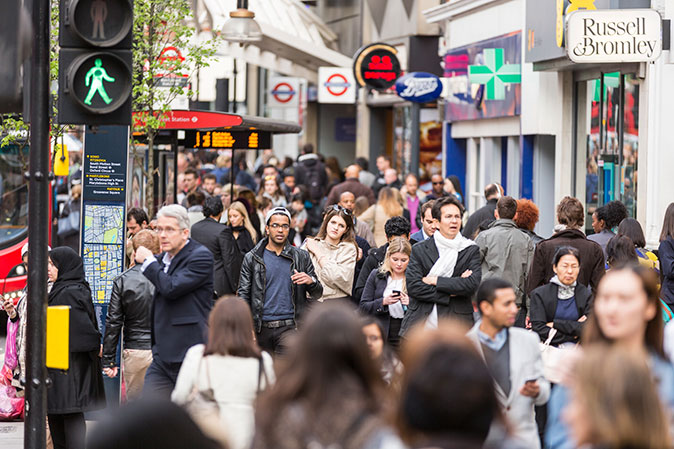
When did Oxford Street become London’s shopping centre?
Despite competition from neighbouring shopping centres like Brent Cross and Westfield Stratford City, Oxford Street still retains its reputation as the capital’s most well-known retail zone. Officially Europe’s busiest shopping street, the 1.2-mile stretch attracts approximately half a million visitors each day and contains around 300 retail outlets.
But the origins of Oxford Street are slightly less illustrious. Before the 18th century, the street formed part of the route from Newgate Prison to the infamous gallows at Tyburn. Spectators used to gather along the side of the street to mock the condemned as they passed. By the late 1700s the area started to undergo some serious changes, with business premises shifting from low-rent theatres, bear-baiting pits and pubs to more socially acceptable residential properties and higher-class entertainment venues.
The 19th century saw Oxford Street’s transformation into the major retail hub it is today. Initially associated with drapers, cobblers and furniture stores, its diminutive shops gradually expanded over the years until they resembled what we now know as department stores. One of these department stores is none other than Selfridges, which was founded in 1909 by American entrepreneur Henry Gordon Selfridge. It remains the second largest department store in the city after Harrods.
Several other national and international companies have their flagship stores on this famous street. In 1921 the UK’s first HMV opened at 150 Oxford Street, and John Lewis also had humble beginnings there as a small haberdashery. Other key brands with flagship shops on Oxford Street include Marks & Spencer, Debenhams, Topshop and Gap.
Oxford Street’s extensive consumer footfall and prime position makes it an incredibly desirable location for retailers. Recent figures suggest the street will welcome as many as 26 new flagship stores by 2019, with several smaller retail units being consolidated to create larger space for the stores. The new Elizabeth Line is predicted to bring even more visitors to the area, meaning that demand is only likely to increase. The central part of the line is due to open in 2018, spurring many retail companies to move into the area before rental rates start to rise.
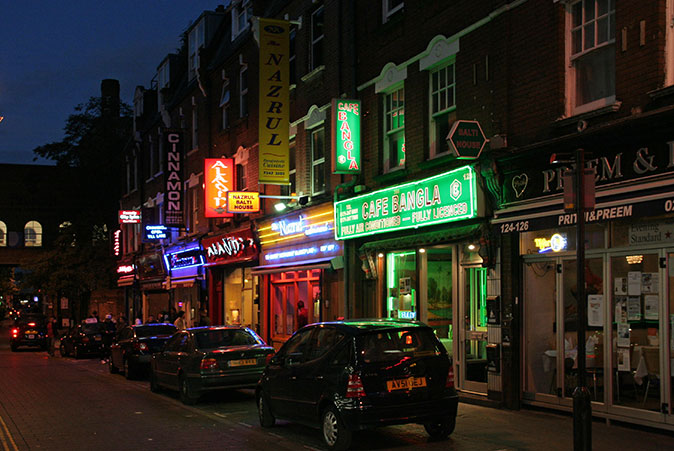
Why are there so many curry houses in Brick Lane?
Brick Lane has a humble history. Once notorious for being one of the city’s poorest slum areas, it was also linked with none other than the murderous Jack the Ripper. Its name derives from the bricks and tiles that used to be made in the area, though by the 17th century the road was more well-known for its brewers than brick-makers thanks to the deep well in the near vicinity.
In the 19th century, Brick Lane was considered a popular area for the Jewish community. This changed in the 1900s when Bangladeshi migrants started to move in. The Bengali people originally came to the UK to seek work, settling in cities with plenty of industrial employment (particularly the capital). The East End was an obvious choice of location to settle given its proximity to the docks.
The significant migration eventually resulted in many local Bengali residents opening up food outlets, particularly ones that specialised in the then-exotic cuisine of their home country. In the latter part of the 20th century, the local council began to recognise the economic success of the Bengali people of Brick Lane and permitted the creation of a specific ‘restaurant zone’ in 1999, actively encouraging the change of use of retail premises to food and drink establishments.
In time, Brick Lane developed a formidable reputation for its excellent range of curry houses. Since then it has become one of the city’s most densely populated restauranteur business clusters.
The popularity of the curry houses reached their peak in 2005, when there were approximately 50 restaurants situated in the area. Demand was largely fuelled by the lunchtime trade at this point, when city-workers would come to the area during their lunch hour. However, in more recent years, peak trade has shifted to the evening time.
Unsurprisingly, with so many curry restaurants in close proximity to one another, competition is fierce. In fact, much has been made of a recent tendency for restaurant-owners to start touting to attract custom. Meanwhile the steady pace of regeneration in the area and its growing popularity with the artistic community has created another facet to the curry house culture in Brick Lane – an increasingly lively restaurant scene.
Brick Lane’s reputation, combined with its regeneration and well-regarded Sunday market, ensure that the area remains popular with those seeking out some authentic Asian cuisine.
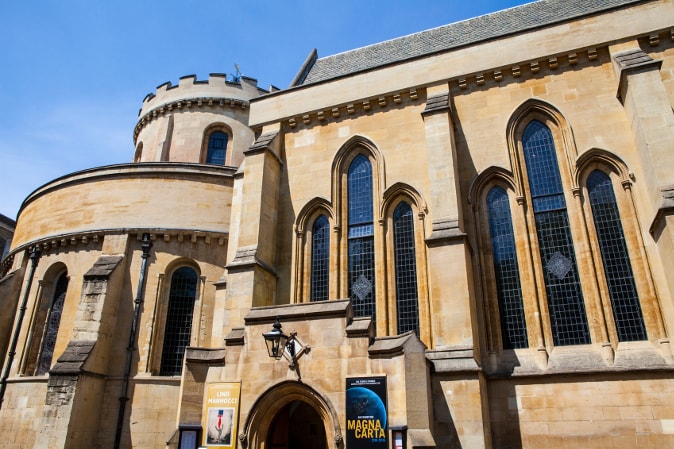
Why are lawyers found around Temple?
Temple has been one of the main legal districts in London for centuries. Some of the country’s most important institutions of law are based here or close by, including the Royal Courts of Justice, two of the Inns of Court (Inner Temple and Middle Temple), and a range of chambers, law firms and foreign embassies. The origins of the legal profession in Temple is fascinating, and tied up very closely with the course of English history itself.
Temple’s legal origins go back to the Middle Ages when it was the haunt of the Knights Templar, a legendary Christian military organisation who spearheaded several campaigns during the Crusades, and who were backed by an incredibly lucrative network of financial arrangements. They were so powerful that, at one point, they built castles, invented an early form of banking, and owned the island of Cyprus. The two halls where they conducted their business were the original precursors to what are now known as the Middle Temple Hall and the Inner Temple Hall.
After years of decline, the Knights Templar were officially disbanded in 1312 and their successors, the Knights Hospitaller, were deliberately held in check by King Edward II. They were denied the use of both Inner and Middle Temple, which were instead passed around noblemen and favourites of the King. This association with the elite of England is where the legal profession in Temple really begins: in 1346 the Knights Hospitaller finally regained possession of both Temples, but by then lawyers who worked for the Earl of Lancaster had been using the halls as their base for the past 15 years. The Knights Hospitaller, by now quite reduced in power, decided to officially lease the Temples out to the lawyers. When the Knights were finally dissolved by Henry VIII in the Reformation, the lawyers simply stayed on.
Temple is incredibly well preserved, having changed very little over the years. The four Inns of Court – Gray’s Inn, Lincoln’s Inn, Inner Temple and Middle Temple – can be visited on a guided tour, where you will discover picturesque buildings, squares, cloisters, hidden enclaves and quaint gardens that are ripe for exploring. In fact, walking through the area can feel like you have gone back in time. Strolling around an ancient courtyard can feel like you have escaped the modern age entirely, as you walk the same streets that have been walked by countless colourful characters from London's past.
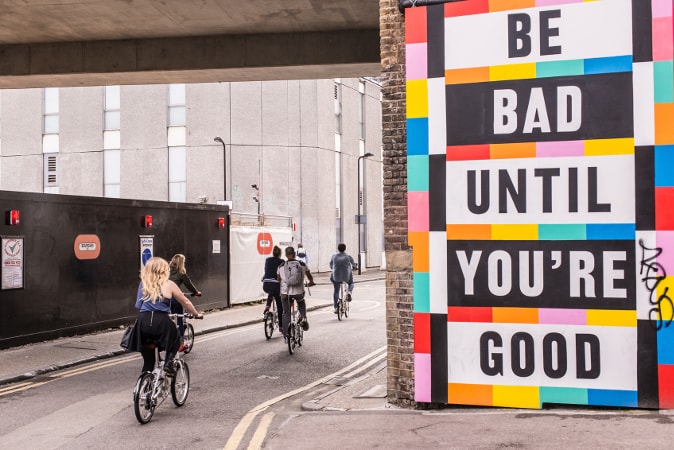
When did Shoreditch bars and restaurants get so cool?
Originally called Soersditch, meaning Sewer’s Ditch, Shoreditch is in London's East End, but until the end of the 19th century it was an outer suburb of the city. And it was this that grew its reputation as a popular entertainment venue. Entertainment districts were loud and rowdy areas, and it was far better to locate them outside of the city walls. So Shoreditch built up a reputation as a popular venue for theatres and shows from the 16th century onwards.
The first playhouse in the country, called 'The Theatre', was built upon the site of the priory in 1576 by James Burbage. It might have even been a location for some of Shakespeare’s plays. The Curtain Theatre was another early theatre, and it was Shakespeare's home before The Globe. It was here that the first performance of 'Romeo and Juliet' was held.
Shoreditch remained an entertainment hub into the 20th century, but by then it was becoming overcrowded, and poverty and crime were taking their toll. After suffering heavy bombing in World War II, renovations began in the 1950s, but even as late as the early 1990s it was still a shabby area full of disused warehouses. As a cheaper area of London, it became popular with artists and creative types, who were attracted by cheap property prices. However, since then it has grown in popularity, so much so that many creatives feel it has become too popular.
Industrial buildings have now become trendy flats and offices, and a huge variety of pubs and clubs have opened along roads such as Old Street and Curtain Road. The area is now popular with self-styled “hipsters”, and it is home to many trendy bars, cafés, galleries, restaurants and businesses. There is a lot of buzz around the area, and many technology startups and larger companies are making their homes around the Old Street Roundabout.
As a result, house prices have risen, but Shoreditch still remains one of the most trendy and hip areas of London.
Other special areas in London
Similar stories of business focus and development can be found across London. Both traditional and non-traditional business clusters have been identified and continue to exist and thrive in the capital. Further examples include clothing supply and retail in Kensington and Chelsea, new media companies in diverse areas including Islington and Hammersmith, and electronics supply and retail in South Camden. In a city the size of London, there are, of course, many such clusters and it is likely that others will develop as and when new technologies and industries come into being.



